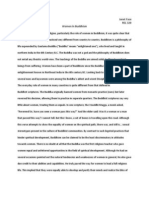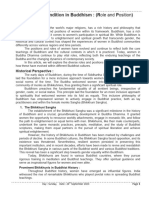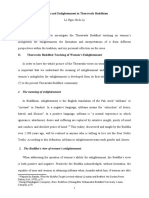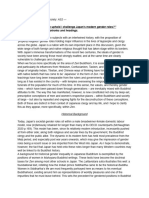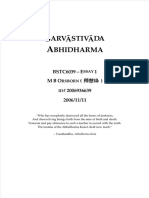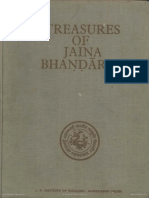0% found this document useful (0 votes)
61 views5 pagesChapter II Textual Analysis
The document discusses two notable Buddhist women from the time of the Buddha - Mahapajapati Gotami and Yasodhara. Mahapajapati Gotami was the Buddha's aunt and one of his earliest disciples. She became the first Buddhist nun after repeatedly requesting to join the monastic order. Yasodhara was the Buddha's wife before he left home to become an ascetic. She remained devoted to him and later joined the monastic community with their son. The document also examines the role of women in Buddhism during this time period and some of the challenges they faced in a patriarchal society.
Uploaded by
Pe Chit MayCopyright
© © All Rights Reserved
We take content rights seriously. If you suspect this is your content, claim it here.
Available Formats
Download as DOCX, PDF, TXT or read online on Scribd
0% found this document useful (0 votes)
61 views5 pagesChapter II Textual Analysis
The document discusses two notable Buddhist women from the time of the Buddha - Mahapajapati Gotami and Yasodhara. Mahapajapati Gotami was the Buddha's aunt and one of his earliest disciples. She became the first Buddhist nun after repeatedly requesting to join the monastic order. Yasodhara was the Buddha's wife before he left home to become an ascetic. She remained devoted to him and later joined the monastic community with their son. The document also examines the role of women in Buddhism during this time period and some of the challenges they faced in a patriarchal society.
Uploaded by
Pe Chit MayCopyright
© © All Rights Reserved
We take content rights seriously. If you suspect this is your content, claim it here.
Available Formats
Download as DOCX, PDF, TXT or read online on Scribd
/ 5




